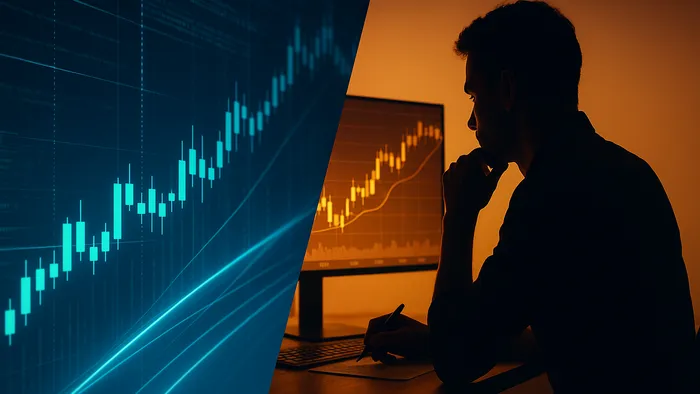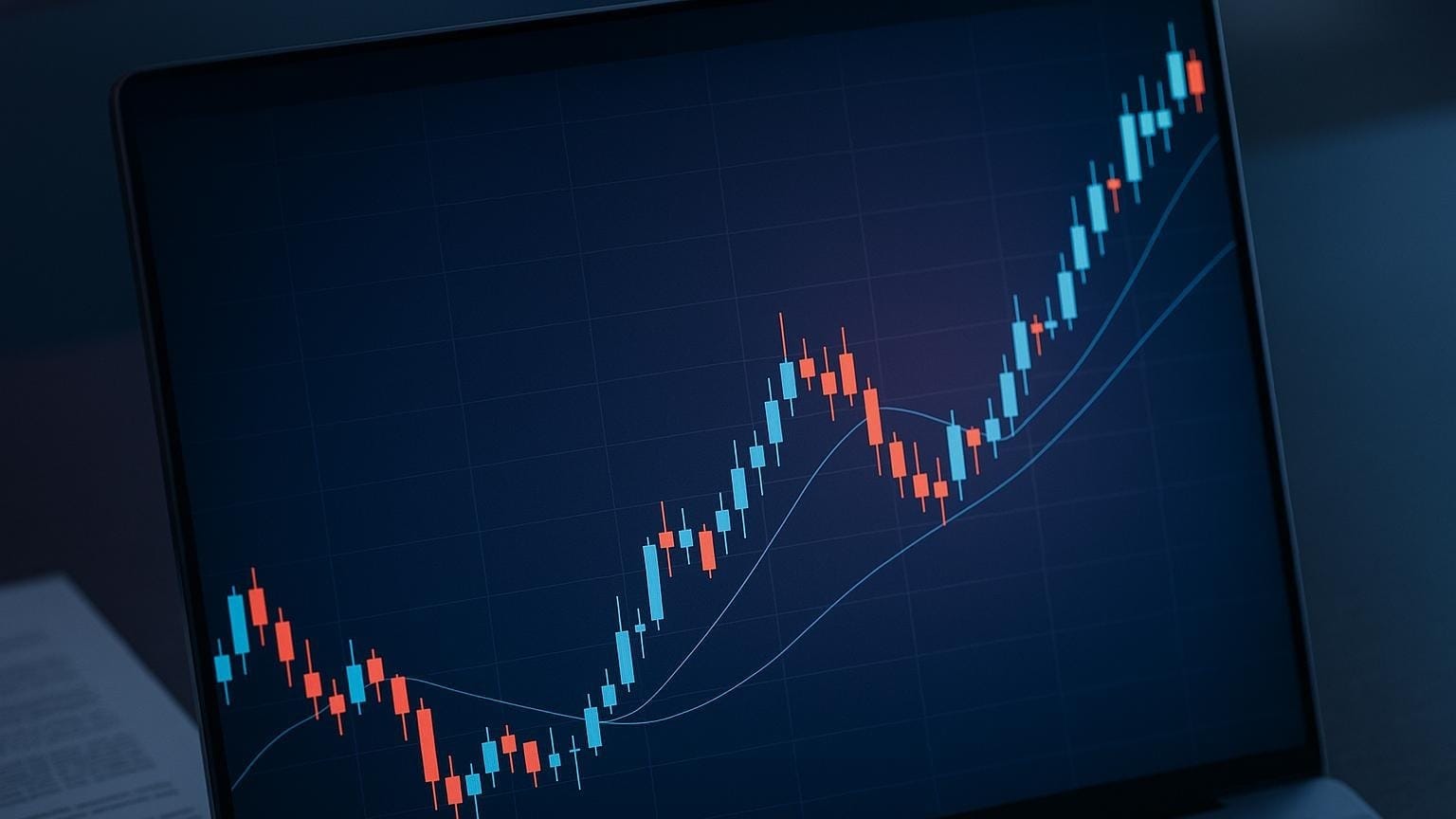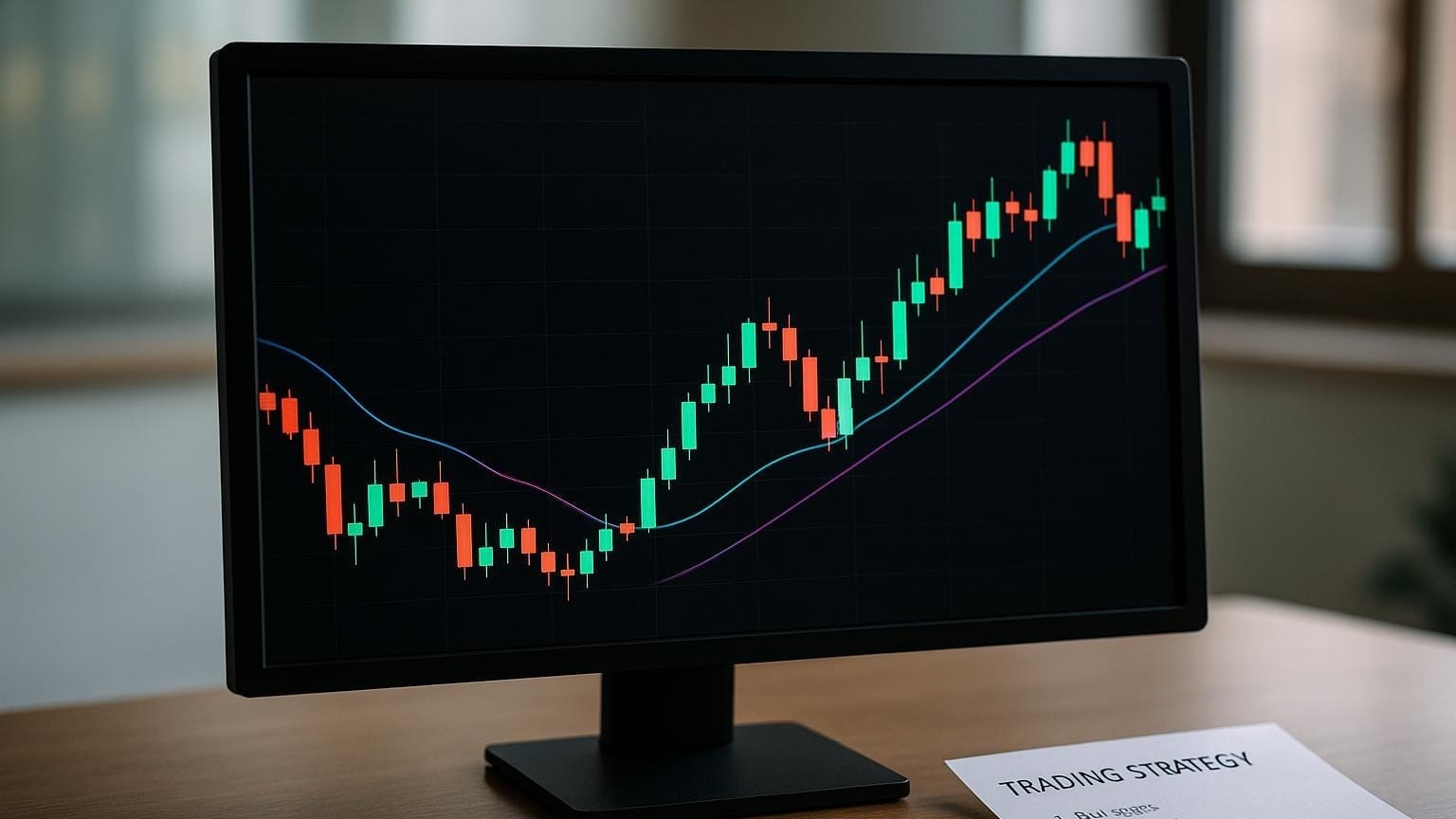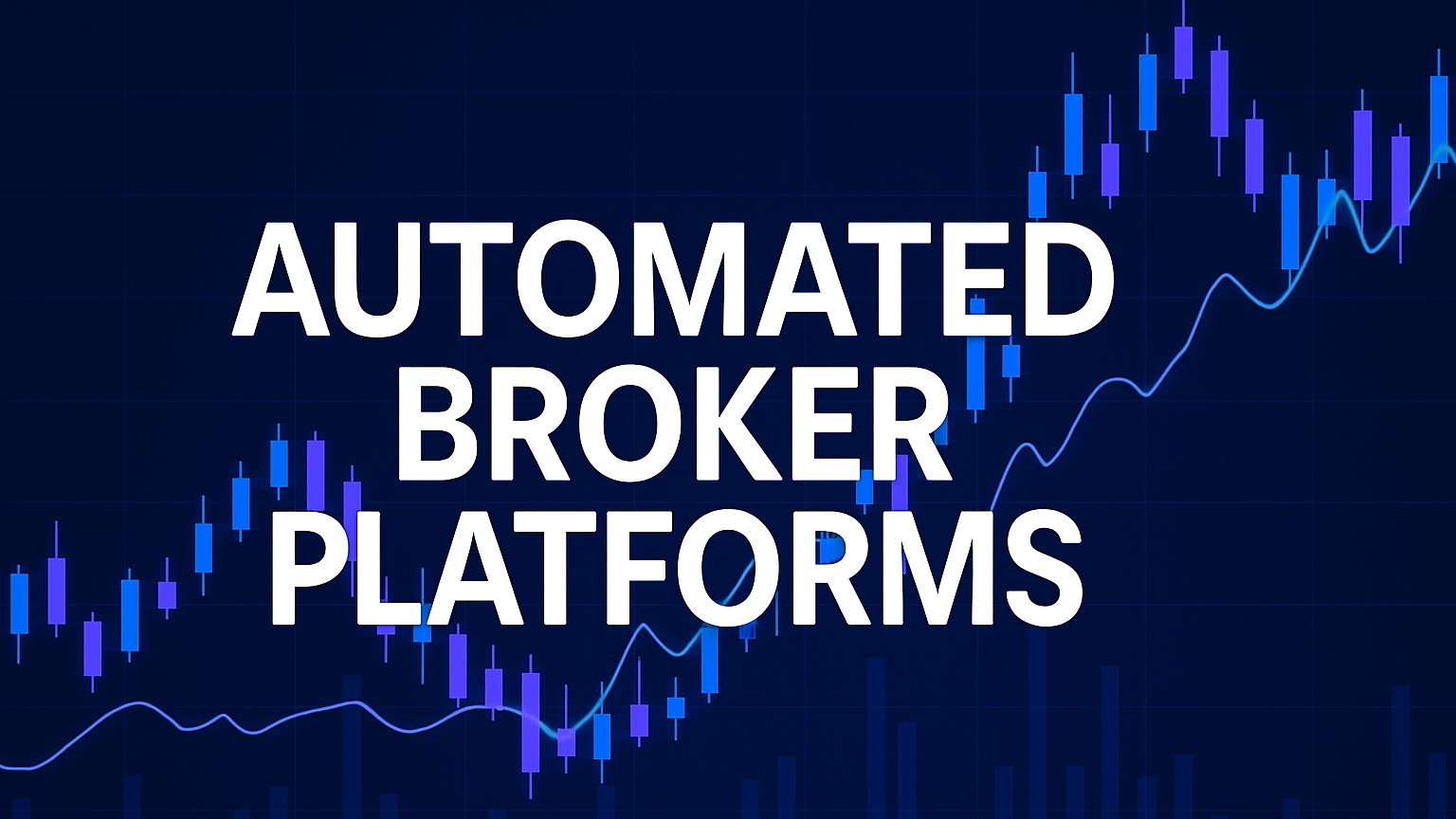Explore the differences between algorithmic trading and traditional trading, focusing on speed, analysis, risk management, and costs.
Algorithmic trading leverages automated, high-speed systems for data-driven trades, while traditional trading relies on human intuition and adaptability, each with unique strengths and challenges suited to different skills and goals.
Algorithmic trading and traditional trading are two distinct approaches to navigating financial markets. Here’s a quick breakdown:
- Algorithmic Trading: Uses automated software to execute trades in milliseconds based on data and predefined rules. It’s fast, precise, and handles large volumes but lacks human intuition.
- Traditional Trading: Relies on human expertise, intuition, and flexibility to adapt to changing market conditions. It’s slower but offers adaptability and qualitative insights.
Quick Comparison
| Aspect | Algorithmic Trading | Traditional Trading |
|---|---|---|
| Speed | Milliseconds | Minutes to hours |
| Analysis Type | Quantitative, statistical models | Mix of technical and qualitative |
| Risk Management | Automated, rule-based | Human judgment |
| Customization | Limited to programmed rules | Highly flexible |
| Cost | High setup, lower ongoing costs | Lower setup, higher ongoing costs |
Both methods have pros and cons. Algorithmic trading offers speed and consistency, while traditional trading provides adaptability and emotional intelligence. Your choice depends on your skills, goals, and resources.
Algo Trading vs. Manual Trading: A Comprehensive Comparison
How Each Trading Method Works
Each trading method operates differently, offering its own set of strengths and challenges.
Algorithmic Trading: Powered by Software
Algorithmic trading uses specialized software to execute trades based on preset rules and market signals. These systems analyze massive amounts of data and execute trades within milliseconds.
Platforms like QuantConnect support coding in Python and C++, while tools like Composer provide no-code options, making this approach accessible to more users.
Here’s how it works:
- Data Collection: The system gathers real-time market data, news, and economic indicators.
- Analysis & Decision: Algorithms process this data using statistical models to pinpoint opportunities.
- Execution: Trades are automatically triggered when the conditions match the rules set in the algorithm.
Manual Trading: The Human Touch
Manual trading relies on the trader's expertise and judgment. Decisions are made by analyzing market trends, economic factors, and company performance. This approach blends technical analysis with insights that algorithms may miss.
Human traders often adjust strategies on the fly, responding to market changes. They combine analytical tools with an understanding of market psychology, offering flexibility that software cannot replicate.
Comparing the Two Methods
| Aspect | Algorithmic Trading | Manual Trading |
|---|---|---|
| Decision Speed | Milliseconds | Minutes to hours |
| Analysis Type | Quantitative, statistical models | Mix of technical and qualitative |
| Risk Management | Automated, rule-based | Relies on human judgment |
| Customization | Limited to programmed rules | Highly flexible, real-time changes |
| Data Processing | Handles multiple markets simultaneously | Limited by human capacity |
| Cost Structure | High setup costs, lower ongoing costs | Lower setup, higher ongoing costs |
Algorithmic trading shines with speed and precision, while manual trading leverages human adaptability and intuition. Each has its place depending on the trader's goals and resources.
Trade Speed and Performance
Speed and Volume Capabilities
Algorithmic trading operates at astonishing speeds, measured in milliseconds or even microseconds, compared to the much slower minutes or hours required for manual trading. This speed advantage is critical in today’s fast-paced markets, where even a slight delay can mean missed opportunities.
These systems also handle transaction volumes that human traders simply cannot match. For example, around 75% of all U.S. stock trades are now executed by computers. This dominance underscores how automated systems excel in high-volume trading scenarios.
Some standout features of algorithmic trading include:
- Continuous 24/7 operation, ensuring no downtime
- Simultaneous execution across multiple markets
- Cross-asset correlation analysis, providing deeper insights
- Real-time risk adjustment, adapting to market changes instantly
These capabilities don't just increase speed, they also influence how markets behave.
Market Effects and Price Impact
Ultra-fast trading comes with its own set of challenges. A prime example is the Flash Crash on May 6 2010, when major U.S. equity indices dropped and recovered 5% to 6% within minutes. Some trades during this event occurred at prices 60% off their typical values. This incident highlighted how rapid trading can destabilize markets.
Under normal conditions, high-frequency trading helps maintain liquidity by keeping bid-ask spreads tight. But during periods of market stress, these same algorithms can widen spreads or even stop trading altogether, reducing liquidity and increasing volatility. For instance, when fees were imposed on high-frequency trading, bid-ask spreads widened by 13% market-wide and by 9% for retail trades.
The risks of speed are evident in cases like the Knight Capital debacle on August 1 2012. A faulty algorithm caused the firm to lose $440 million in just 45 minutes. This incident illustrates how the very speed that makes algorithmic trading effective can also magnify errors, a stark contrast to the slower, steadier pace of manual trading.
Risk Control and Psychology
The way trading speed influences market dynamics also highlights distinct differences in risk management and trader psychology between algorithmic and traditional trading approaches.
Algorithm-Based Risk Controls
Algorithmic trading systems rely on preset rules to manage risks. These systems constantly monitor trades and adjust positions according to defined parameters. For example, they can automatically execute stop-loss orders when losses reach a specific threshold.
Many platforms use tools like quantitative analysis, stress testing, and the Kelly Criterion to determine optimal position sizes while keeping an eye on various market conditions. This structured method ensures risk is handled consistently across all trades.
"Traders should develop a giveback rule; that is, if you give back a certain percentage of your profits on the day, then close your positions. No trading should take place for the rest of the day. Yes, swing traders and hedge funders should also adopt a giveback rule." – Mike Bellafiore, co-founder of SMB Capital
Human Risk Assessment
Traditional trading relies heavily on human judgment. Research shows that 90% of traders lose money, often because psychological factors cloud their decision-making.
Some common psychological hurdles for human traders include:
- Fear: Closing profitable trades too early out of caution
- Greed: Holding onto losing trades, hoping for a turnaround
- Overtrading: Making excessive trades driven by emotions
Risk and Psychology Comparison
| Aspect | Algorithmic Trading | Traditional Trading |
|---|---|---|
| Risk Assessment | Quantitative analysis and real-time monitoring | Experience-based judgment and intuition |
| Execution Speed | Millisecond response to risk triggers | Minutes to hours for human decisions |
| Emotional Impact | Minimal emotional interference | Strongly influenced by fear and greed |
| Flexibility | Limited to programmed scenarios | Adaptable to unusual situations |
| Risk Monitoring | Automated, 24/7 surveillance | Constrained by human attention span |
"Successful professional traders know that their greatest enemy is in their own minds. The emotions of fear and greed are more powerful than any market forces in creating losses." – Fidelity
Algorithmic trading excels at consistently applying risk strategies, monitoring factors like volatility, position sizes, and asset correlations. However, these systems can struggle in unexpected market events where human intuition becomes critical.
For traditional traders, managing psychological risks is crucial. Strategies to improve include:
- Keeping detailed trading journals
- Establishing clear risk limits before entering trades
- Conducting regular trade reviews
- Partnering with accountability peers or mentors
Required Tools and Systems
To effectively execute a trading strategy, having the right tools and systems in place is essential. These setups vary depending on whether you're engaged in algorithmic or manual trading.
Algorithmic Trading Setup
For algorithmic trading, you'll need a robust setup that can handle the complexities of automated strategies:
- High-Performance Computer: A machine with strong processing power and ample memory.
- Multiple Monitors: At least two screens to monitor data feeds and trading activity.
- Trading Platform: Professional software like Interactive Brokers' Trader Workstation.
- Programming Environment: Python 3.6 or later is commonly used.
- Data Feeds: Access to real-time market data through providers such as Polygon.io with Alpaca brokerage.
- Backtesting Tools: Software to test strategies against historical data for validation.
Manual Trading Equipment
Manual trading requires a simpler setup compared to algorithmic trading. Here's an overview:
| Component | Recommended Solution |
|---|---|
| Brokerage Account | Interactive Brokers or Charles Schwab |
| Charting Platform | TradingView |
| Market Scanner | Finviz or TradingView Screener |
| Trading Journal | TraderSync |
| Basic Hardware | A standard laptop with reliable internet |
Setup and Operating Costs
Algorithmic Trading Costs: This approach demands significant upfront and ongoing investments. Here's a breakdown:
- Hardware: Initial costs range from $10,000 to $100,000.
- Software Fees: Monthly expenses can vary between $200 and $3,000.
- Market Data Feeds: These cost $300 to $2,000 per month.
- Developer Costs: Annual expenses for a developer often exceed $100,000.
These costs support the speed, data handling, and automated risk management required for algorithmic trading.
Manual Trading Costs: Traditional trading is more affordable. Basic hardware and standard software subscriptions are usually sufficient. Beginners often opt for platforms like Webull and Fidelity for their user-friendly tools and low entry barriers. Experienced traders may choose Interactive Brokers' IBKR Pro for its advanced execution capabilities.
Conclusion
Key Takeaways
Algorithmic trading and traditional trading take very different paths to engage with the market. Algorithmic trading thrives on speed and data-driven execution, while traditional trading leans on human judgment for more flexible strategies. These differences influence how each approach handles risk, execution speed, and decision-making.
| Aspect | Algorithmic Trading | Traditional Trading |
|---|---|---|
| Speed | Fast, automated execution | Slower, human-paced decisions |
| Analysis Type | Data and quantitative-focused | Qualitative and intuitive |
| Skill Requirements | Coding and programming skills | Analytical and market research |
| Costs | Higher upfront investment | Lower initial barriers |
Understanding these distinctions can help you align your trading style with your skills and goals.
Deciding on Your Trading Style
The best trading method depends on your unique situation. Here are some factors to consider:
- Technical Skills: If you’re comfortable with coding, algorithmic trading might be a better fit.
- Time Commitment: Algorithmic trading involves a significant setup effort but requires less day-to-day attention. Traditional trading, on the other hand, demands constant monitoring.
- Risk Management: Algorithmic trading can magnify both profits and losses due to its speed, while traditional trading allows for more deliberate risk evaluation.
"Automation in algo trading removes human emotions and biases from the decision-making process, leading to more disciplined and consistent execution. In traditional trading, human emotions can influence decision-making and introduce potential biases."
Actions to Take
- Try Paper Trading: Use demo accounts on platforms like Interactive Brokers or Charles Schwab to practice without real financial risk.
- Explore a Hybrid Approach:
"You can also combine the two approaches and make your strategy to suit your investment goals and style."
- Build Your Skills: Learn Python and data analysis for algorithmic trading, or sharpen your market analysis skills for traditional trading.








